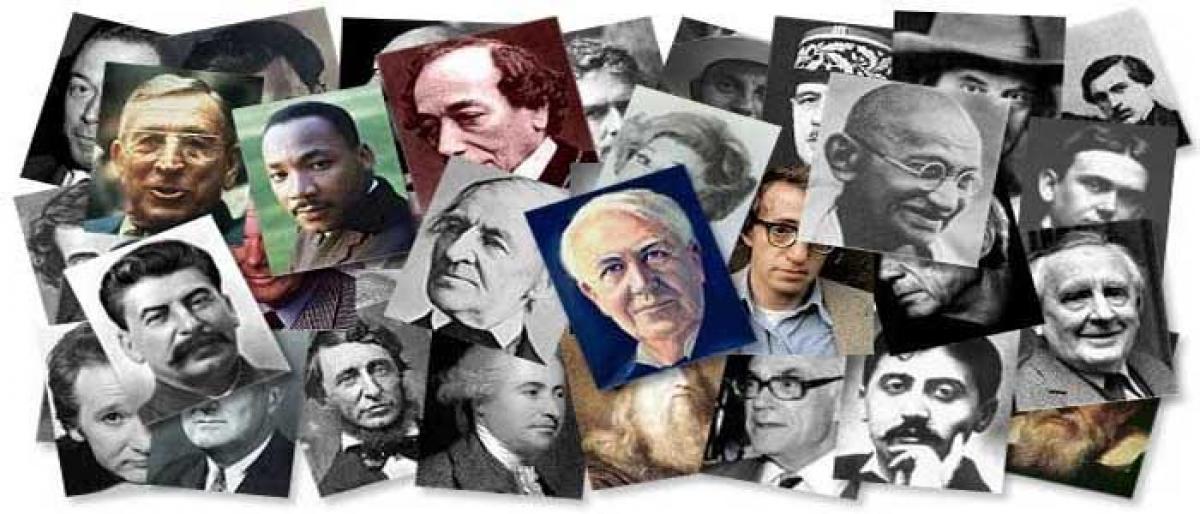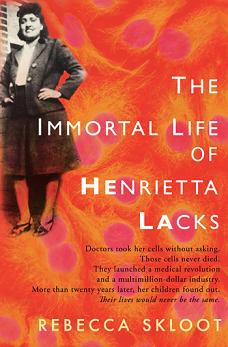by Public Service Associate Owen

Biographies! Across the many realms of print and literature, there are many topics, subjects and styles that stand out. But none stand out quite like biographies, as this particular brand of non-fiction revolves around the lives of single persons. They cover the trials and tribulations of the lives of all sorts of famous people, from Julius Caesar to Cesar Chavez. Thus, biographies are an efficient, excellent way to live vicariously through some of the most famous and influential people to ever exist. There is so much to discover about the idols, villains, actors, innovators, leaders, stars, and extraordinary humans of our lives, and one of the best ways to do so is by getting your hands on a good biography. So, in this blog, I will be highlighting four intriguing biographies of four very different yet equally remarkable people. From Henrietta Lacks to Winston Churchill to Frida Kahlo, each biography tells a thrilling tale of some of life’s most colorful characters.
Winston Churchill
Churchill: A Life by Martin Gilbert | print / digital

While not quite an obscure figure himself, Winston Churchill, the brave and brash Prime Minister of World War II Britain, led a highly-eventful life. He was far more than the stalwart presider that guided Britain through its darkest days of the war; he was also an accomplished soldier, historian, author, and artist, as well as one of the longest-serving politicians in British history. A new-age Renaissance Man, a devoted politician, and a fierce leader, the remarkable story of one of the most important leaders of the Second World War can be found in Martin Gilbert’s Churchill: A Life. Most of us know of Churchill’s exploits as Prime Minister, but he ascended to this position once he was in his mid-60s; by that point, he already had over 40 years’ experience as a politician, correspondent, author, and soldier. Gilbert brings these formative years of Churchill’s life to the forefront, showing how they shaped the man who stood up to Hitler’s regime. While Gilbert leaves some important details of Churchill’s life in the background – such as his copious and consistent consumption of alcohol – it is nevertheless a fantastic account of the life of one of the most significant figures of the 20th century. If you give it a read, I bet you will learn something new about the man that described himself as “a man of destiny.”
Frida Kahlo
Frida: A Biography of Frida Kahlo by Hayden Herrera | print / digital

Frida Kahlo has become one of the more recognizable names of twentieth century North American art. A self-taught painter that drew upon the nature and artifacts of her home country of Mexico, Kahlo rose to prominence (after her death) in the 1970s and 80s, where she became an icon of feminist, Chicano, and LGBTQIA+ movements. Hayden Herrera’s Frida: A Biography of Frida Kahlo is an excellent portrayal of Kahlo’s life. It details the struggles and hardships that Kahlo faced – including a tumultuous childhood in Mexico City during the height of the Mexican Revolution, a devastating accident when she was 18 that left her unable to have children, her marriage to fellow Mexican artist Diego Rivera that was fraught with infidelity, and a pervading condition of poor health that affected her for her whole life until her death at the age of 47. While Kahlo was a devoted Communist (which is how she met Rivera), her work was deeply inspired by Mexican folklore, and she made use of both pre-Columbian and Catholic themes in her paintings. As Kahlo once mused, “what was it to be a Mexican? – modern, yet pre-Columbian; young, yet old; anti-Catholic yet Catholic; Western, yet New World; developing, yet underdeveloped; independent, yet colonized; mestizo, yet not Spanish nor Indian.”
The most common subject of her artwork was herself, as she painted many self-portraits throughout her life that displayed a constant shift in how she portrayed herself. As a result, her face has become one of the most-recognizable in the art world. Herrera’s biography covers all of these points and more in much greater detail, so I would highly recommend checking it out if you are a fan of art history, Mexican culture, or simply Frida herself. She is, simply put, one of the most celebrated and important artists of the twentieth century.
Henrietta Lacks
The Immortal Life of Henrietta Lacks by Rebecca Skloot | print / digital

Henrietta Lacks is a name you might not have heard of, but I can assure you she is one of the most important people to have ever affected the world of medical science. She is also the subject of Rebecca Skloot’s ground-breaking biography The Immortal Life of Henrietta Lacks, where she dives into Lacks’ often-ignored personal life and story. While Lacks did not live long – she died at the age of 31 from cervical cancer – the cells that were biopsied from her tumor have proven to be, under the proper conditions, immortal. In 1953, they became the first human cells to be successfully cloned. These cells, now known as HeLa cells, proved to be an incredible discovery, as it allowed biomedical researchers to perform experiments on them that were previously impossible due to the typically short shelf-life of cells. HeLa cells have been an invaluable resource for all sorts of medical advancements, from the eradication of polio to the latest cancer research.
What is often forgotten in this story, however, is the woman herself from whom these cells were taken – Henrietta Lacks. Lacks never gave consent for her cells to be taken, experimented on, or profited off of, and her family received no financial compensation. Thus, while her cells proved to be a breakthrough in biomedical research, they also brought about renewed discussions into biomedical ethics, patient consent, and the profiting off of patients’ cells and tissues by pharmaceutical companies. This is why Skloot’s biography is so important – it brings Lacks, her story, and her family to the forefront of the discussion surrounding HeLa cells. Skloot does an impeccable job of bringing life to the woman that is known only for her cancerous cells. She deftly navigates the ethical questions that arose from HeLa cells, while also properly crediting their usefulness to medicine. If you want to delve into one of the most important medical breakthroughs of the twentieth century while also giving proper credit to the woman responsible, then Skloot’s The Immortal Life of Henrietta Lacks is certainly worth picking up!
Marie and Pierre Curie
Radioactive: Marie and Pierre Curie: A Tale of Love and Fallout by Lauren Redniss | print

Sticking with science, the final biography that I would like to recommend is about Marie and Pierre Curie, the dynamic husband-wife duo that we now know as the mother and father of radioactivity. The title of Lauren Redniss’s biography pays tribute to this fact, as it is titled Radioactive: Marie and Pierre Curie: A Tale of Love and Fallout. This tale of Marie and Pierre Curie is not simply written, however; Redniss utilizes original art, photographs, graphics, and text to make Radioactive something to be experienced, rather than just simply read. The biography concerns itself with Marie and Pierre, their tumultuous upbringings in Poland and France, respectively, Marie’s flight to Paris to be one of only 23 women in the 1,800 student Sorbonne, their chance meeting at a tea in 1894, and their subsequent partnership that was, as Marie put it, “consecrated entirely to scientific research.” It is the biographical account of not only the lives and research of the Curies, but of the birth of an entirely new scientific age – the nuclear age.
While reading Redniss’s book, one cannot help but ponder all of the repercussions that humanity has faced, and will continue to face, as a result of the Curies’ groundbreaking research. Pierre’s gleefulness at discovering lesions on his arm after strapping radium to it for 10 hours is followed by Marie coldly and dutifully recording data about her deteriorating condition in a lab notebook as she withers away from radioactive poisoning. Diagrams of nuclear fission are paired with all-enveloping mushroom clouds, the imposing aftermath of a nuclear detonation. Redniss gives the Curies and their immense discovery the care and attention they deserve in a unique, unforgettable biography of the parents of the nuclear age.
Biographies are a wonderful way to experience lives beyond our own. If there is anyone you admire or frown upon, or if there is anyone you want to know more about, then chances are there’s a great biography about them that is waiting to be read! So come check out our biographies and autobiographies section here at Bexley Public Library!